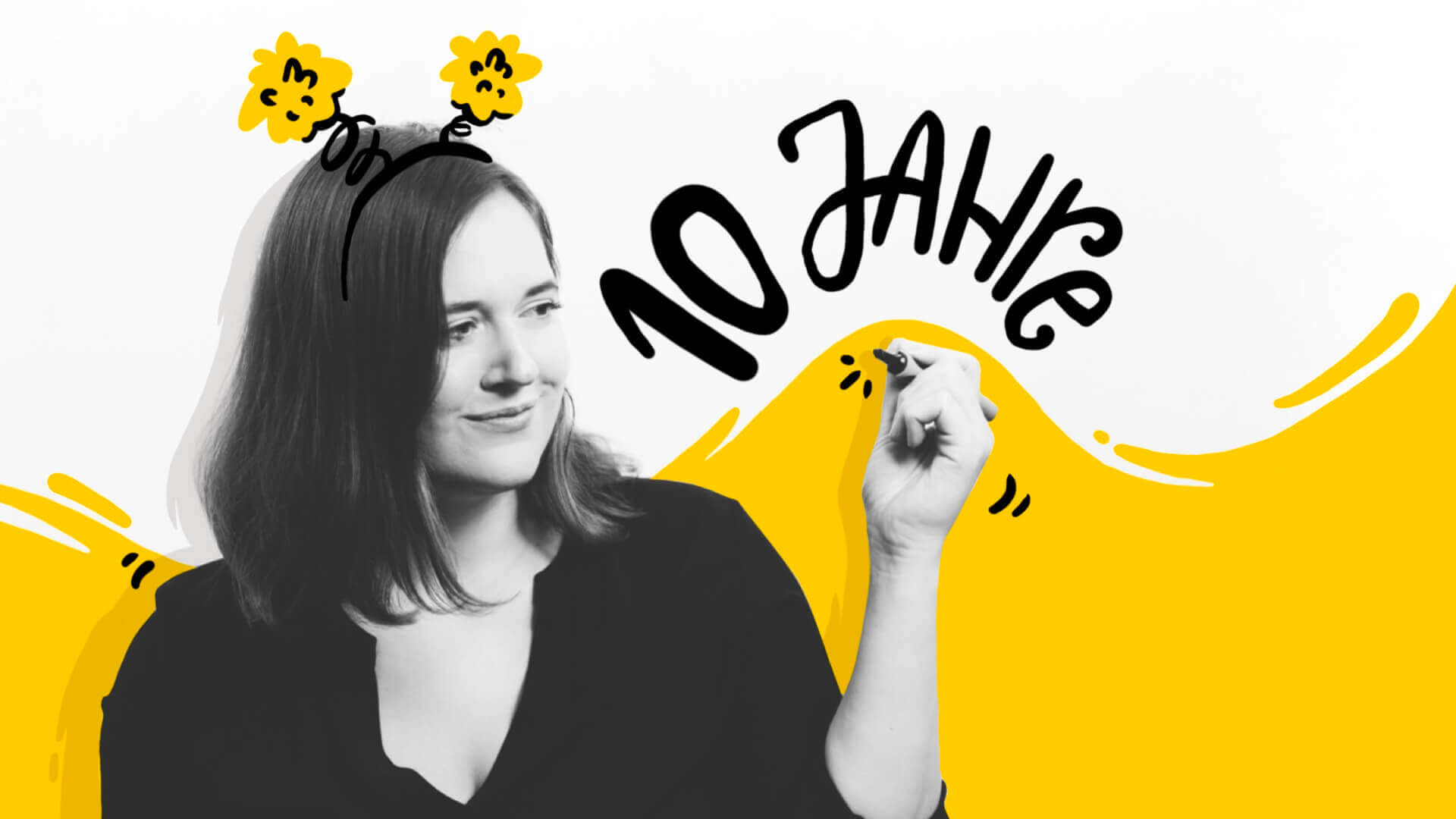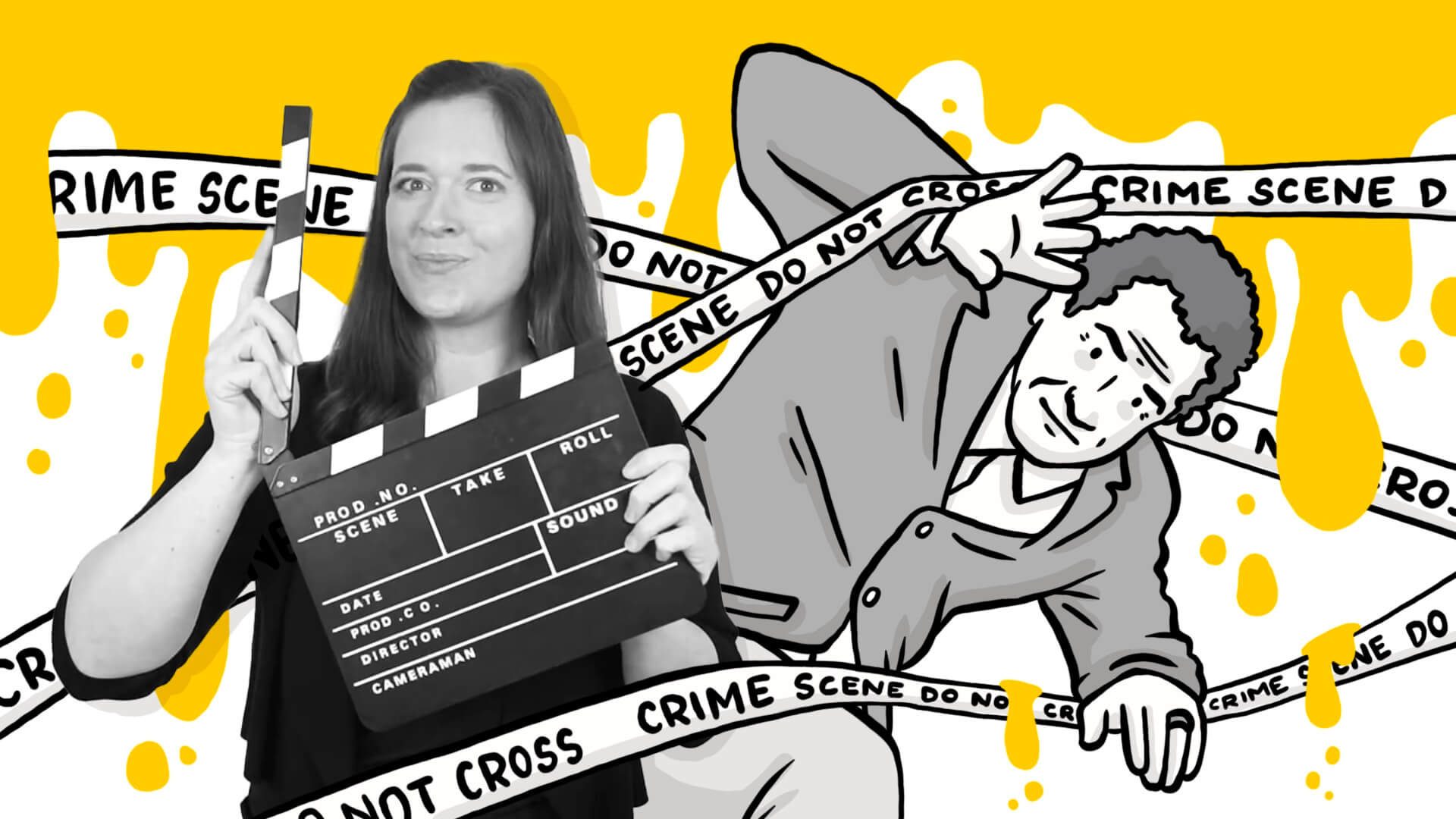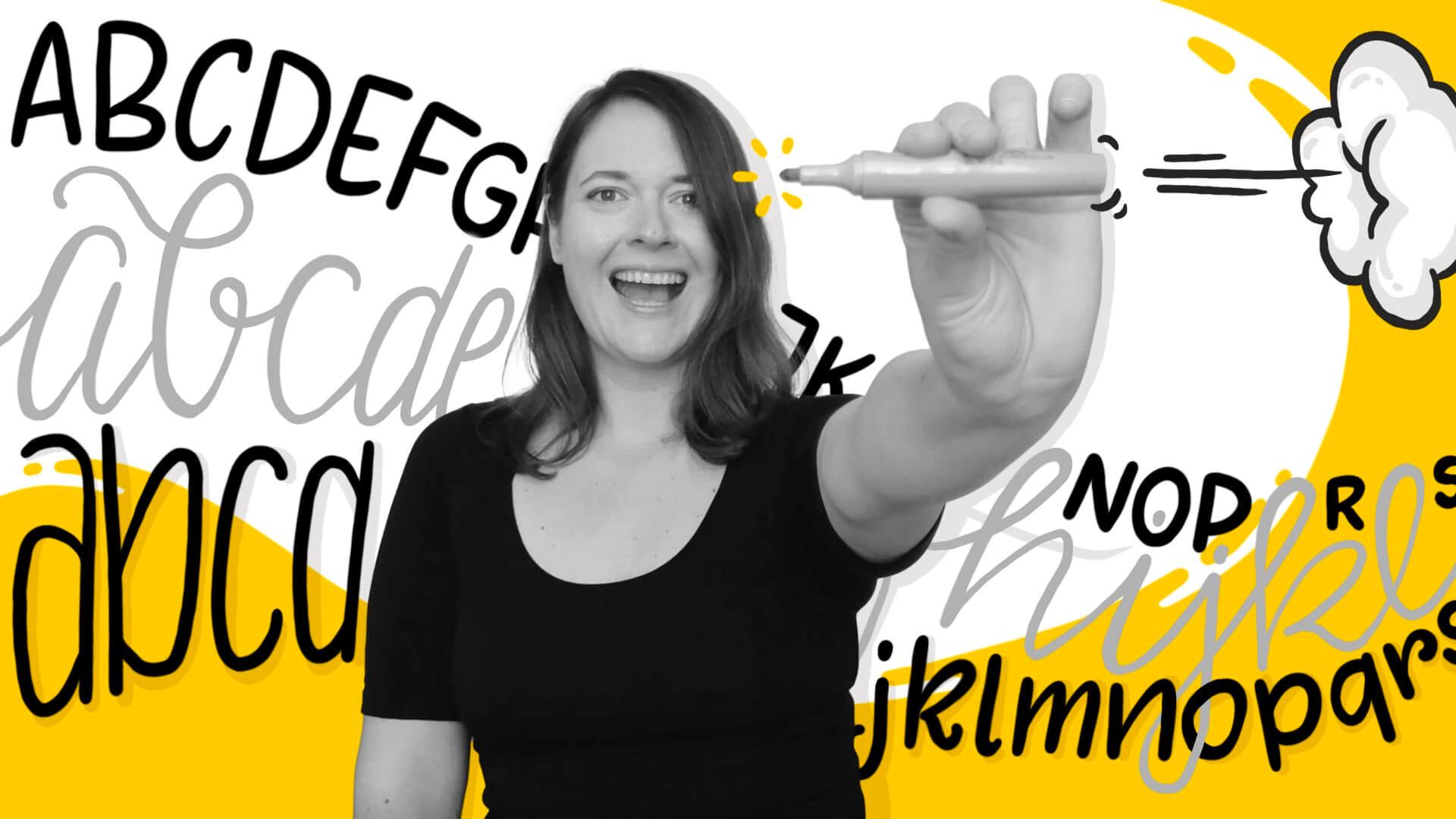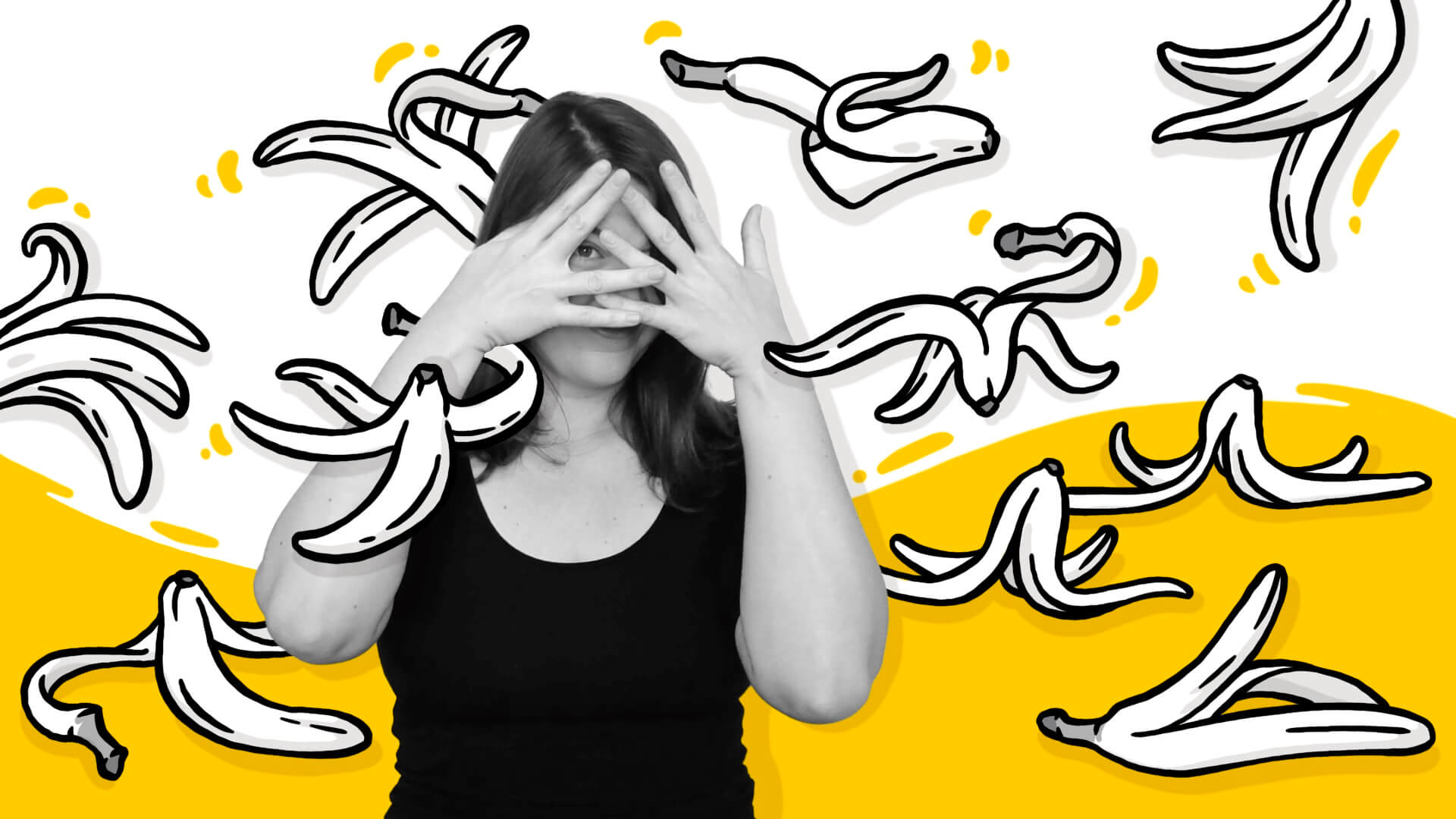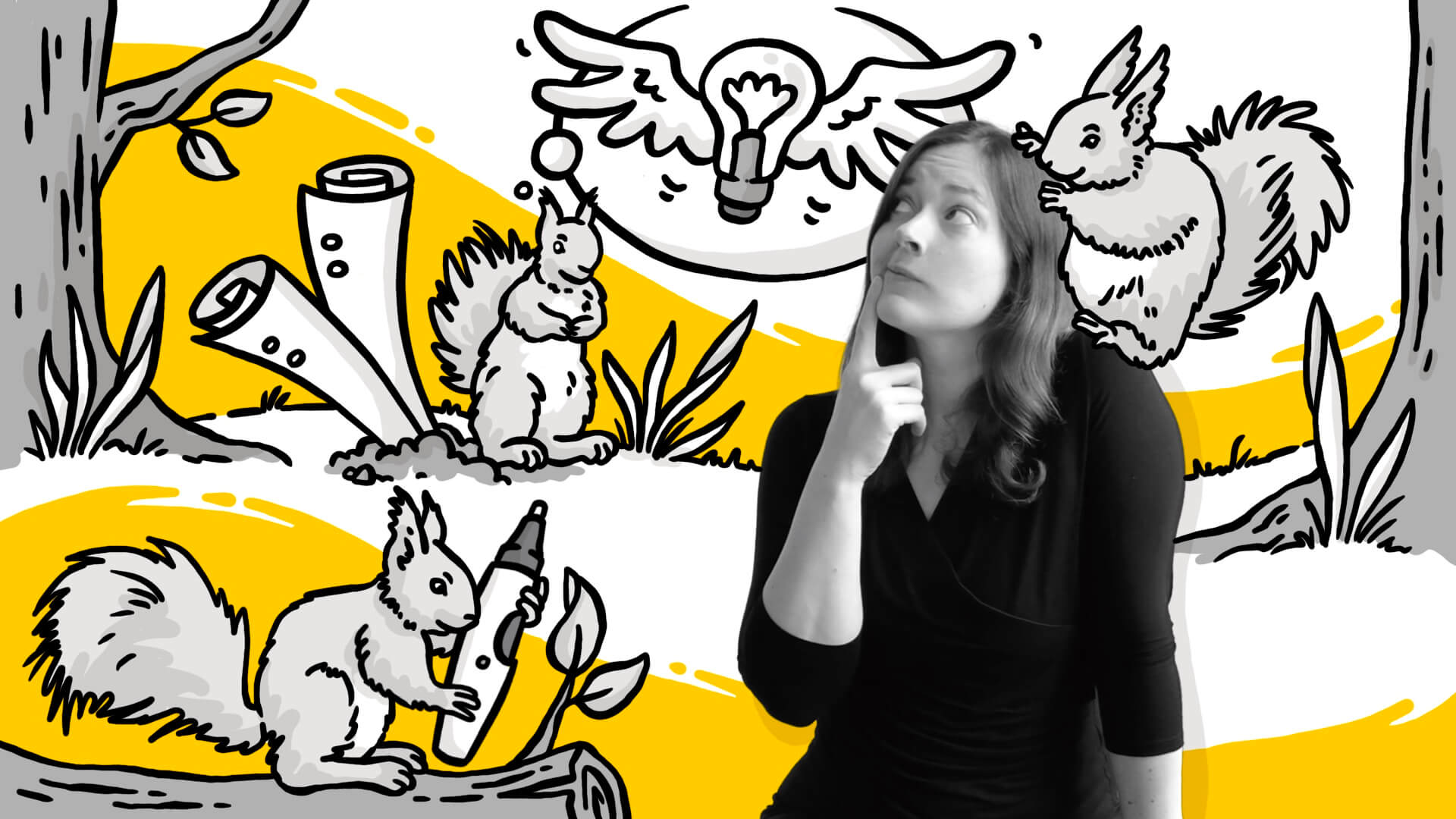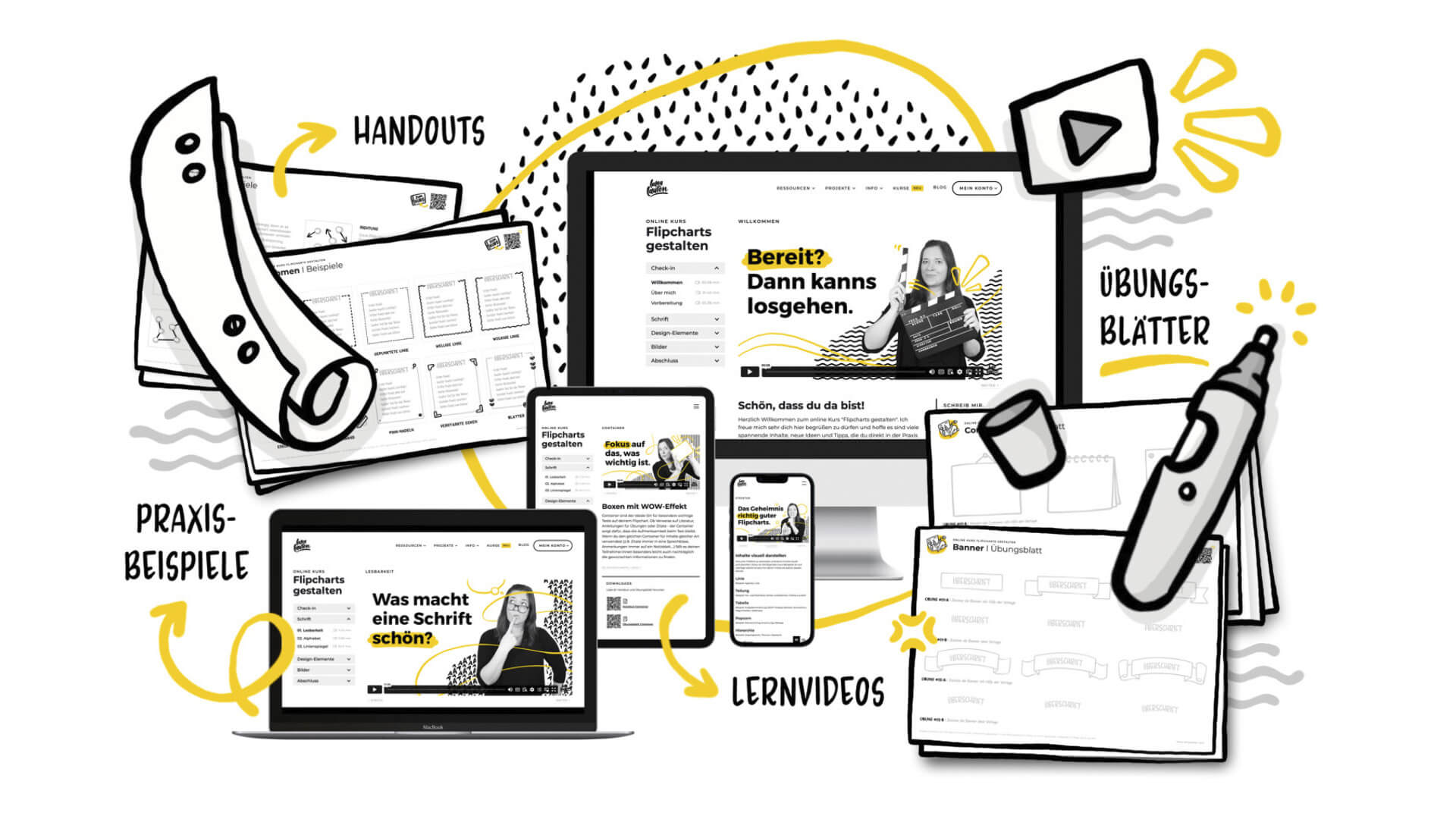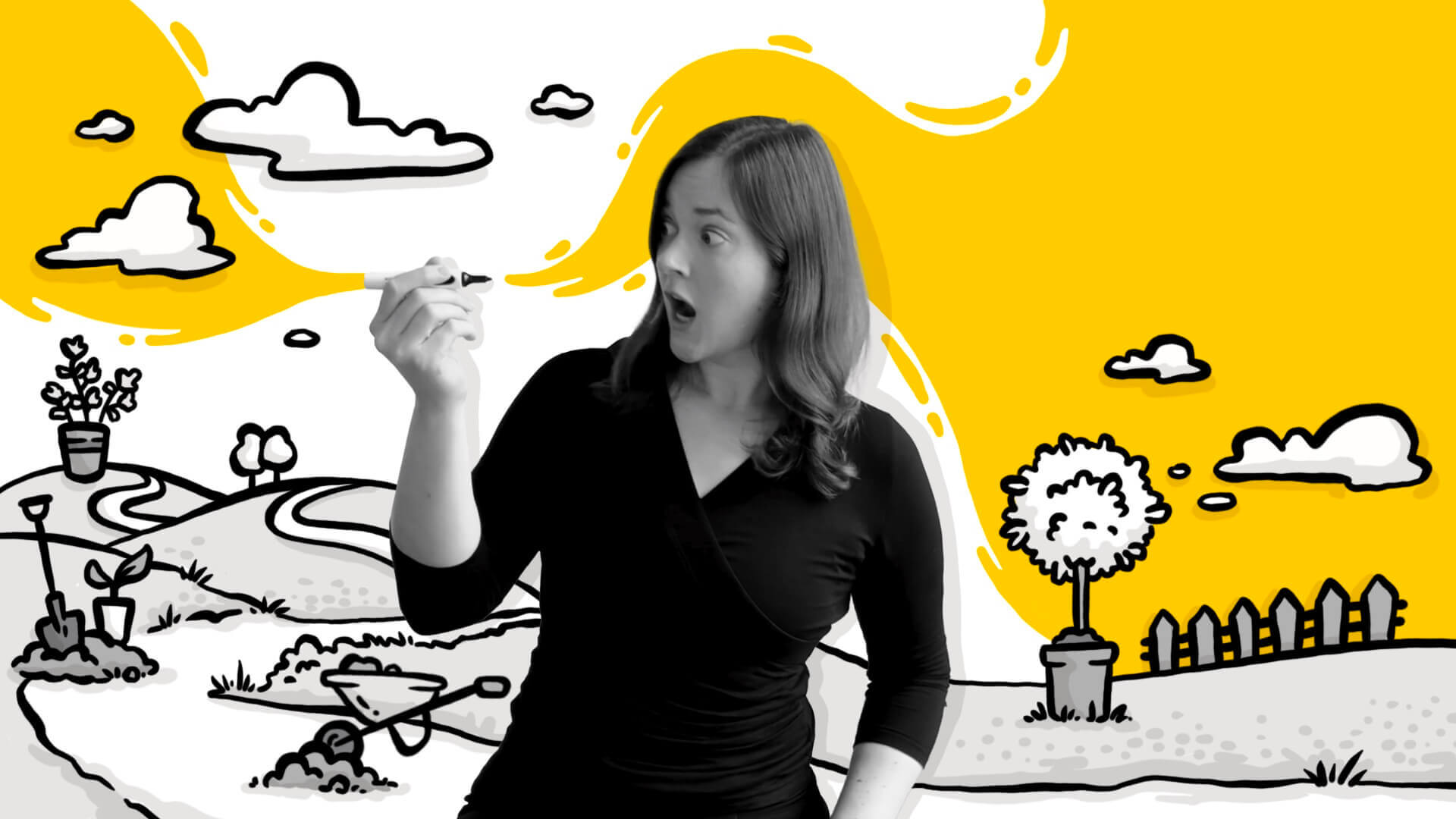Time for a Retrospective
Wow, how time flies. Just last week, I realized that my first graphic recording was almost exactly 10 years ago. Perhaps the impulse for reflection also came from visiting a client with whom I have been working almost since the beginning, who organizes a large event in Vienna every year where I capture the content with graphic recording. Until now, the preliminary meetings for this event had not taken place at the headquarters. This year, I was on-site for the first time for the event’s preliminary meeting and was quite amazed when I saw all the graphic recordings from the past years hanging on the walls.
Over 20 meters of drawings and texts have accumulated there by now. Almost like an exhibition - my exhibition, of which I had previously known nothing. I received a tour and experienced a whole bouquet of emotions while reflecting on the past events. And in the colorful mix of feelings, some insights also emerged. I want to share these with you.
But let’s start at the beginning. With my first graphic recording. Join me from the first steps to some dead ends and new paths that I have taken over the years.
First Steps
I did my first graphic recording even before I knew the word for what I was actually doing. For years, I had already visually documented seminars and workshops that I held. The resulting flipchart protocols were very popular among the participants, and I was often approached by trainer colleagues asking what, where, and how I was doing it. This led me to start giving workshops for other trainers where I shared my knowledge on flipchart design.
“We are planning a big event - would you accompany us and draw?”
This question was posed to me at one of those workshops. And I did what I do with all new doors that open up to me and look exciting: I enthusiastically said “Yes!” And soon realized: I had no idea what I was getting myself into.
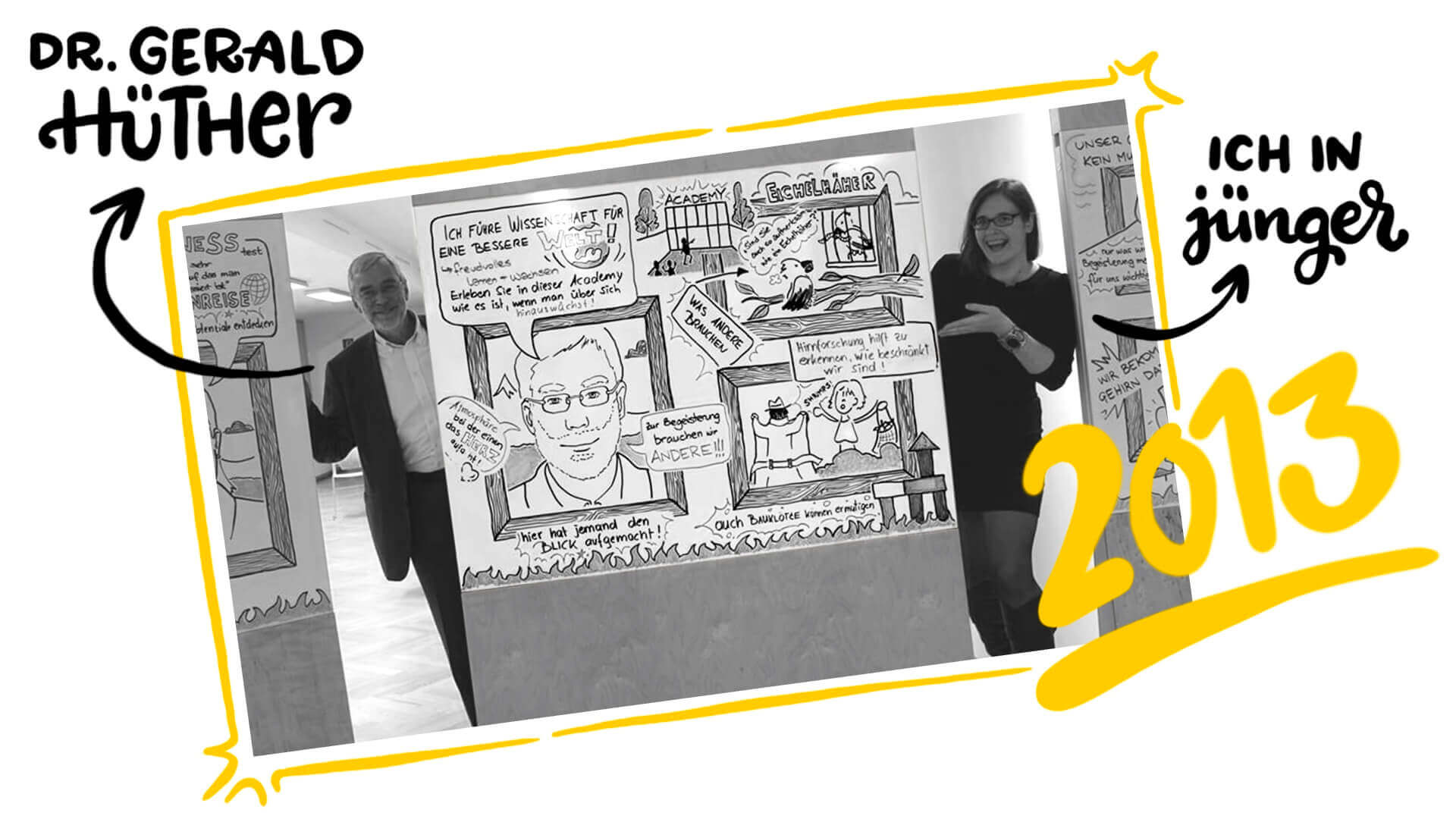
The event in question was to be documented by me and a second artist on whiteboards. These walls were huge, and at that time, I had very little experience working on a whiteboard. Today, I feel a bit embarrassed by the images created back then because my drawing style had a lot of potential (to put it kindly). But I still enjoy looking at the images because I learned several important lessons from the project:
1. Coloring on a whiteboard is a bad idea
Don’t do it. You won’t achieve a uniform result and will only waste a lot of time trying. The solution is: patterns. This will save you a lot of time and nerves. And the result looks better. More generally: sometimes it’s not about forcing something that doesn’t want to happen (more of the same) with a lot of effort and stubbornness; rather, it’s about realizing that you need new techniques. Then it’s time to research or experiment until you find a way that delivers better results.
2. Don’t take on too much
The question I didn’t have an answer to back then: How fast do I really draw? It’s very important to know your own drawing speed and not to take on more than you can actually handle in the available time. What I’ve learned since then: The better you know yourself and your strengths and weaknesses, the better you can assess how to handle a situation and how to achieve the best possible result.
3. “Graphic Recording” is exactly my thing
During the event, the term “Graphic Recording” (as a description of what I was doing) came up, and suddenly a whole universe opened up to me. I immediately researched what was available online on the topic. Unfortunately, there wasn’t much at that time, and most reports came from America, where the technique was already somewhat more widespread. One thing became clear to me quickly: live documenting content is a great method to help participants understand and remember complex information and stimulate discussions. Furthermore, graphic recording combines several things that I find fantastic:
-
Drawing: The goal is to quickly and appealingly bring complex content to paper using writing, color, structure, shadow, movement, and images.
-
Learning: Through the many events I get to accompany with graphic recording, I continuously learn new things and dive into foreign worlds.
-
Helping: With my work, I can support others in shaping important but sometimes complicated content into a form that resonates with the audience.
Dead Ends
One event was followed by many more graphic recordings. Because my work is very public (many people see what I do at each event), my new activity quickly became known.
There were many beautiful experiences: great events that I was able to accompany, exciting people I had the chance to meet, interesting content on a wide range of topics that I might never have come into contact with otherwise (medicine, physics, economics, art, finance, urban planning, industry, culture, didactics, and many more), and many places that I got to know.
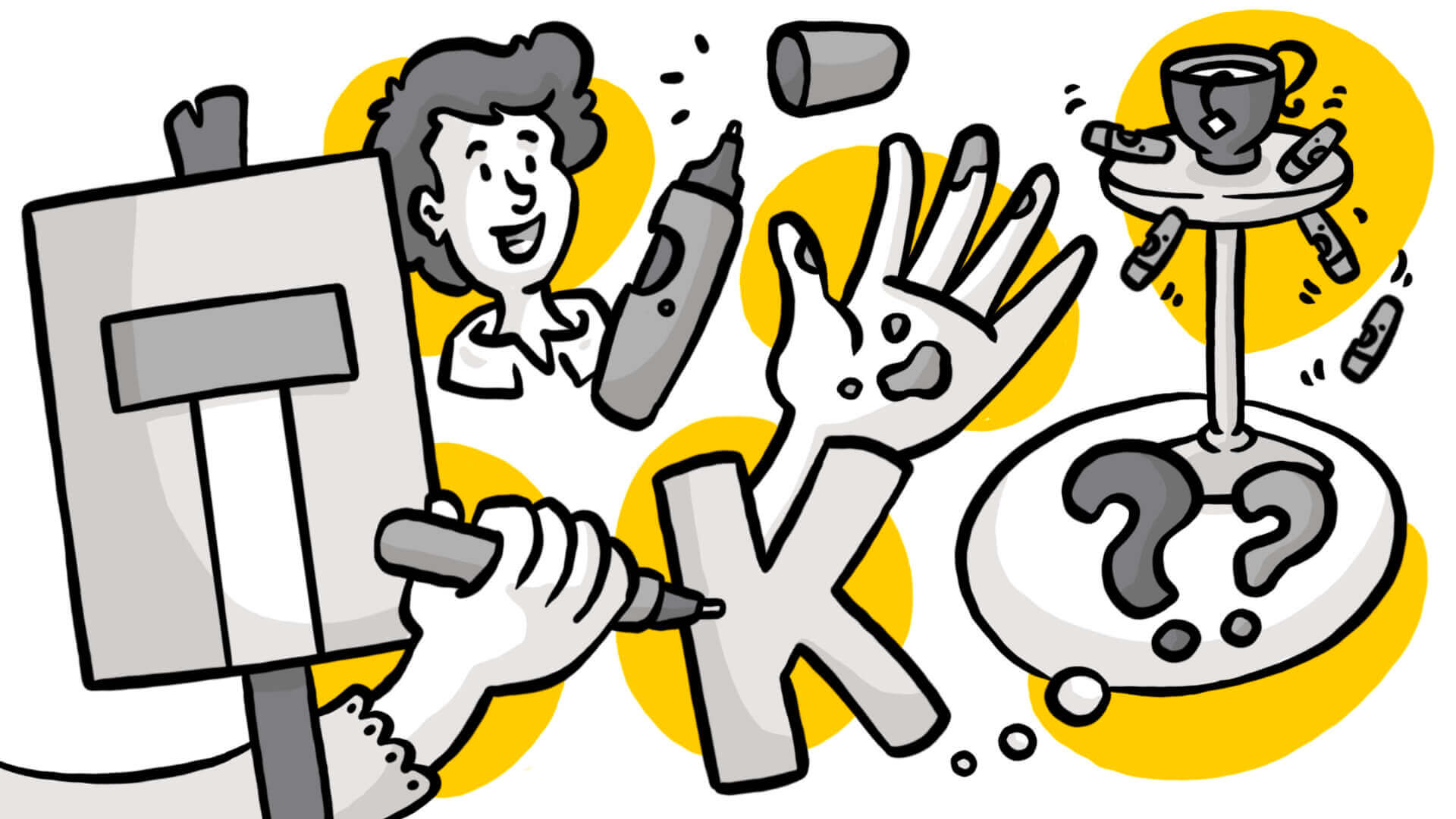
But there were also one or two mishaps. Situations that challenged me, where I pondered for a long time afterward what I could have done better or at least differently, and where I realized that I am far from the end of my graphic recording journey. Here are some highlights from the list of things I have learned:
Portraits of Speakers
When things need to move quickly, and the content is presented only briefly or at a particularly fast pace, it is not the right time to focus on drawing portraits. However, these can easily be prepared in advance. This saves a lot of time on-site, which can be invested in capturing the content.
Painted Hands and Walls
I quickly got used to the paint that, for reasons unknown to me, is ALWAYS found on me and my clothing after an event. However, paint on the walls or floors of venues is unacceptable to me. Long research and experimentation (on my poor living room wall) were necessary to find the right combination of paper, pens, and mounting materials that leave no traces (more on this in the blog post about analog graphic recording).
Creating Space
Drawing requires space (for the paper, the materials, and myself). This should be planned from the beginning. It is very annoying when participants place empty coffee or tea cups on the standing table meant for drawing materials. However, it is not meant maliciously, but rather a sign that it was not clear that this space is a “workspace” and should be treated as such. It is the task of the graphic recorder to create this space.
Maternal Love
One of the strangest experiences I ever had while graphic recording was at the Vienna City Hall. There, I was drawing at an event for children. There were fairies, dragons, and a lot of mythical creatures that were immortalized in the graphic recording at the request of the little ones. When I once looked up from drawing, I was quite surprised to see a mother with her (estimated to be no more than two years old) child happily contributing to the graphic recording on her arm. For a long time, I couldn’t understand how someone could come up with the idea of letting a toddler “draw along.”
Even though I have always been very critical of my drawing skills, it was clear to me that the picture was not drawn by toddlers. Only many years after the incident did I realize that the “participation” was not an insult to my drawing skills but an expression of joy in creating. They wanted to “join in.” And that is a good impulse. Where it is possible and makes sense, a space should always be created that also allows participants to actively contribute. Whether in the form of post-its where they can add ideas, templates for flipcharts and bulletin boards that they can fill in, or icons that they can choose and pin.
The Big Word with K
I was often introduced as “our artist.” I was often equally honored and confused. “Artist” seemed to me such a big word that I felt I did not live up to. After all, I was not in a studio pouring buckets of paint onto floor-to-ceiling easels or creating oil paintings over weeks of work (yes… that was my idea of art for a while). It took me a long time to realize that art is not something reserved for a few chosen ones. Today, art for me has to do with creating something. And I do that. Many more people do this than there are declared “artists.”
Questions I Don’t Have Answers To
I was often asked, “How do you do that?” Since I was standing with a pen next to a large sheet of paper, I suspected that the question was not sufficiently answered with “I write and draw what I hear.” That was somewhat obvious. I reflected. What exactly happens during graphic recording? At some point, I realized that graphic recording is not only a creative activity but also, to a significant extent, a cognitive one. Yes, of course, the better you can draw, the more beautiful the result will be. And practice definitely pays off (in everything in life). The drawing is visible. The part that cannot be seen is what happens before I even put the pen to paper. Essentially, there are four steps. Three of them happen before drawing:
- Collecting: What is being said and shown?
- Structuring: What belongs together?
- Reducing: What is important and what can be left out?
Only then does the translation (into images and metaphors) follow. What I do is thus a four-step process of which only the last part is observable from the outside.
New Paths
Do you remember the client I visited recently, where I got a tour of the gallery of my graphic recordings? I want to share those images with you. I think you can particularly see how my style has developed over time and how I have tried new things. Some of them I have kept long-term, while others I have discarded. See for yourself:
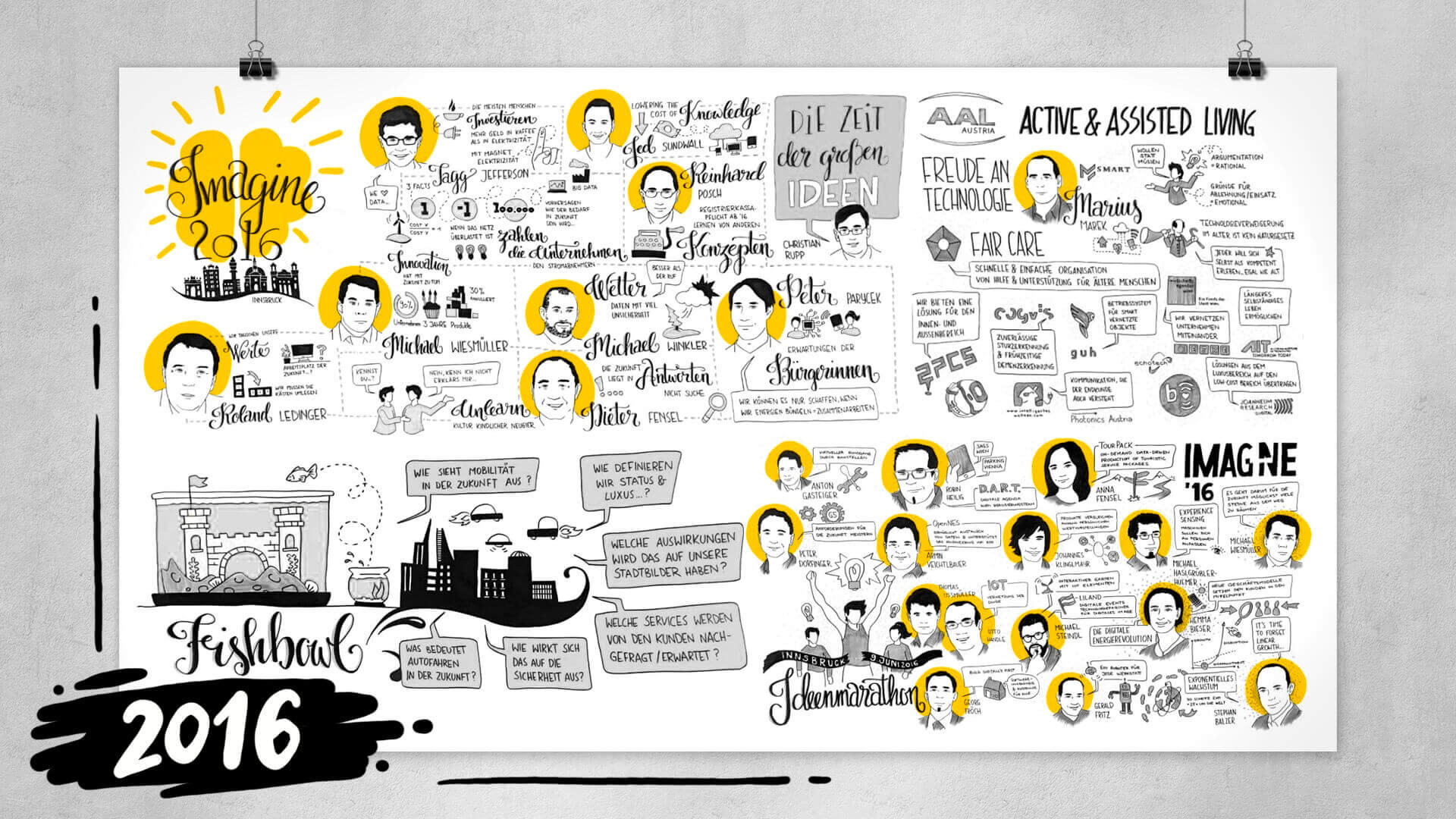
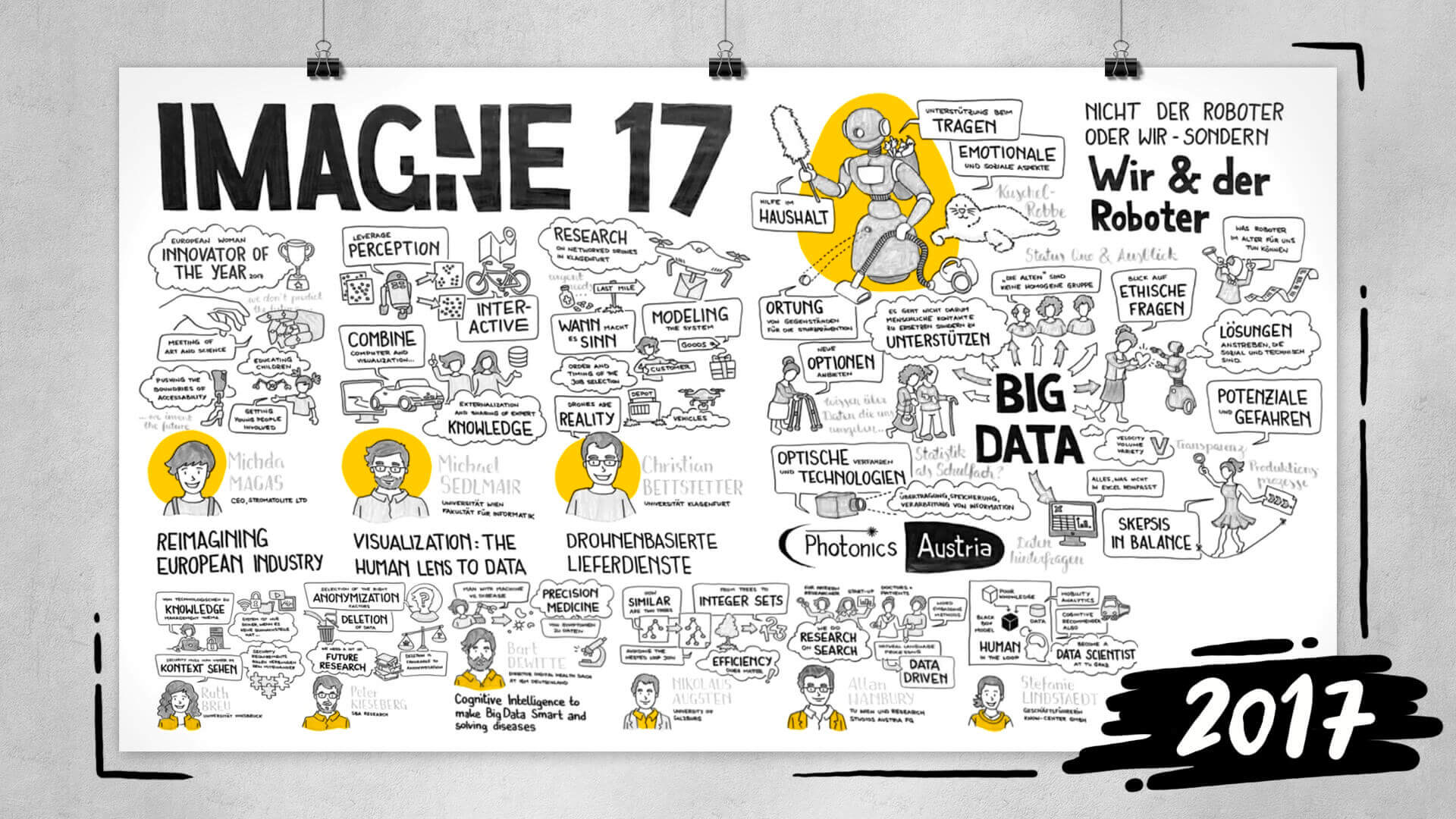
What has (besides a lot of practice, which we all know is always needed) changed my graphic recordings in the long run? Well, there are a few things I would pass on to my younger self if there were ever a chance to send messages to the past. Since I’m not quite sure how long that would take - here are my most valuable Aha moments for you:
Shadows
By adding shading, illustrations appear much more three-dimensional and exciting. It does take some time to give the images that final touch, but in my opinion, it is always worth going the extra mile.
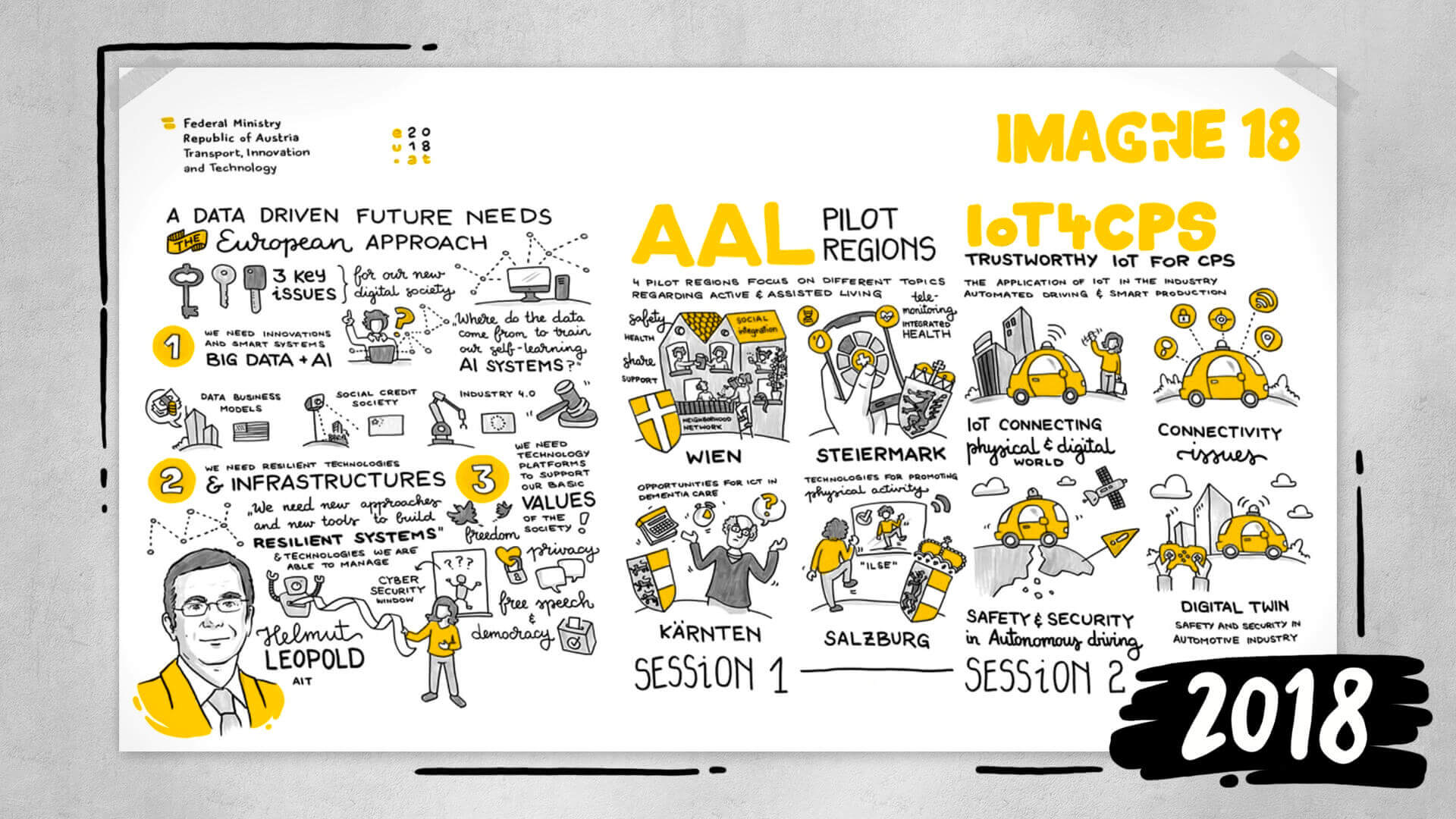
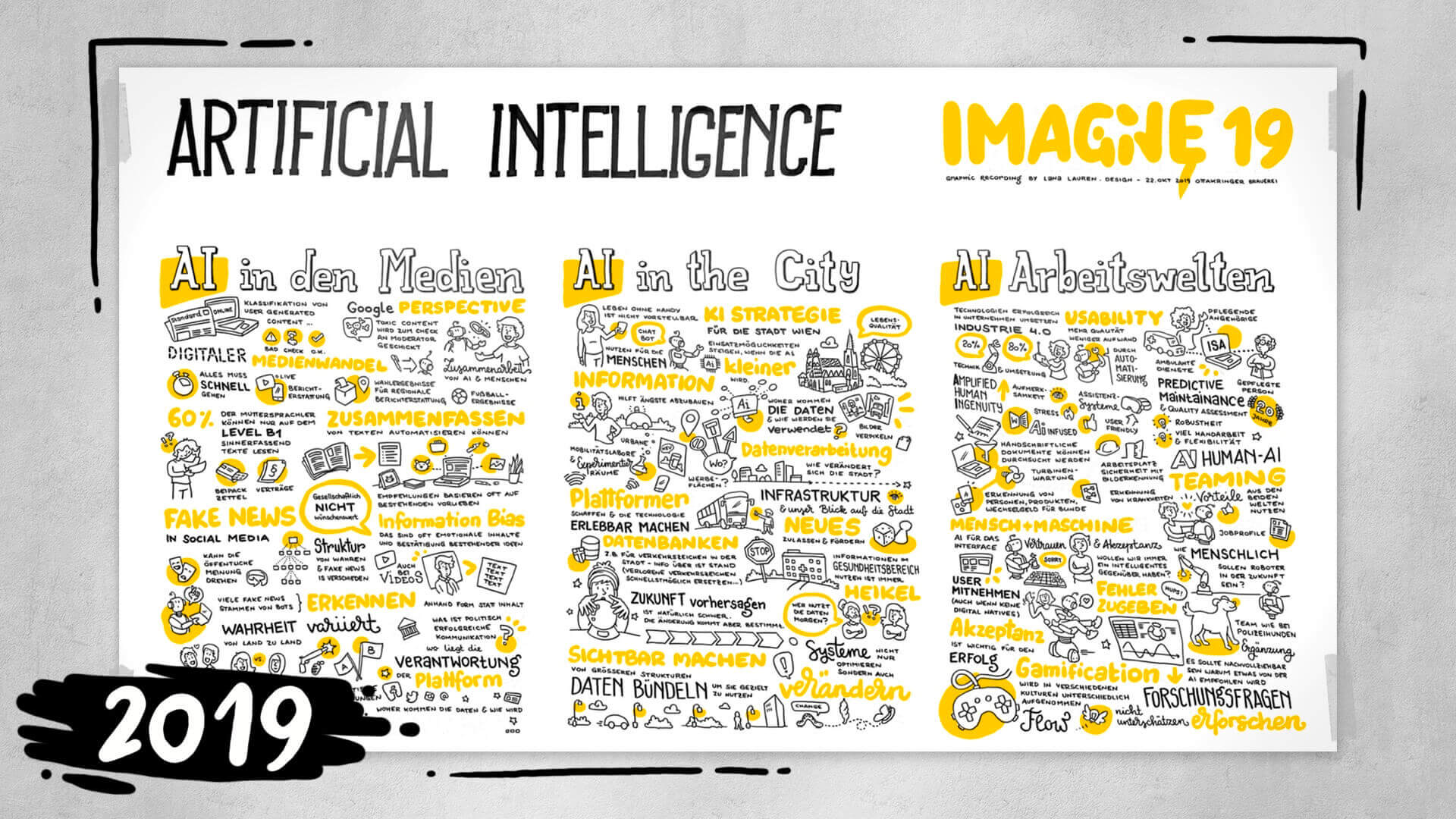
Digital Work
The switch from pen and paper to the graphic tablet was one that I resisted for a while. Only the pandemic and the shift of many events to a digital format (webinar instead of live event) finally convinced me of the many advantages of digital graphic recording. Fortunately, there are again live events today. However, the iPad has stayed with me. Even though there are still events here and there for which I choose to use paper (in coordination with the clients), analog graphic recordings have become significantly the exception.
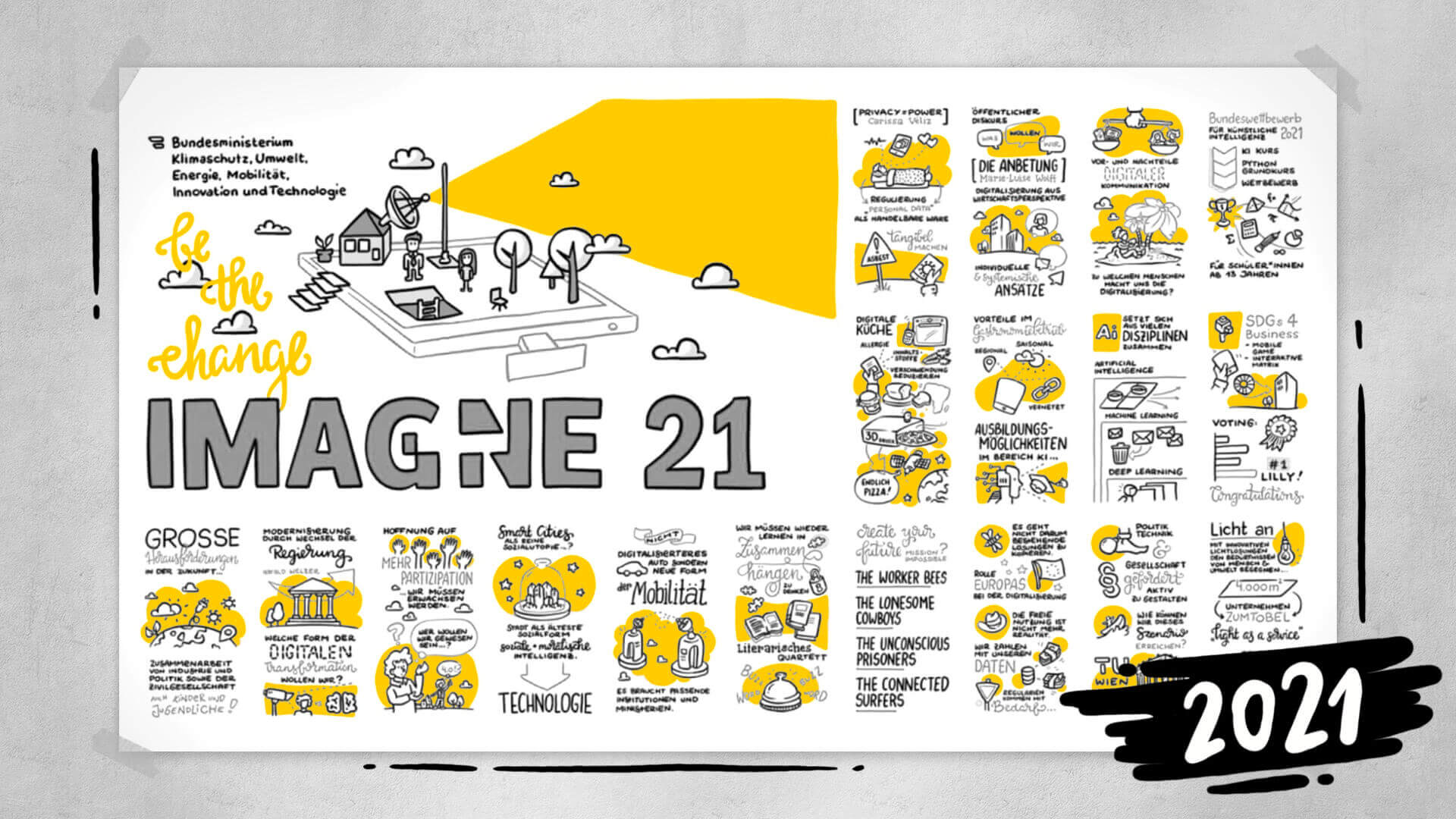
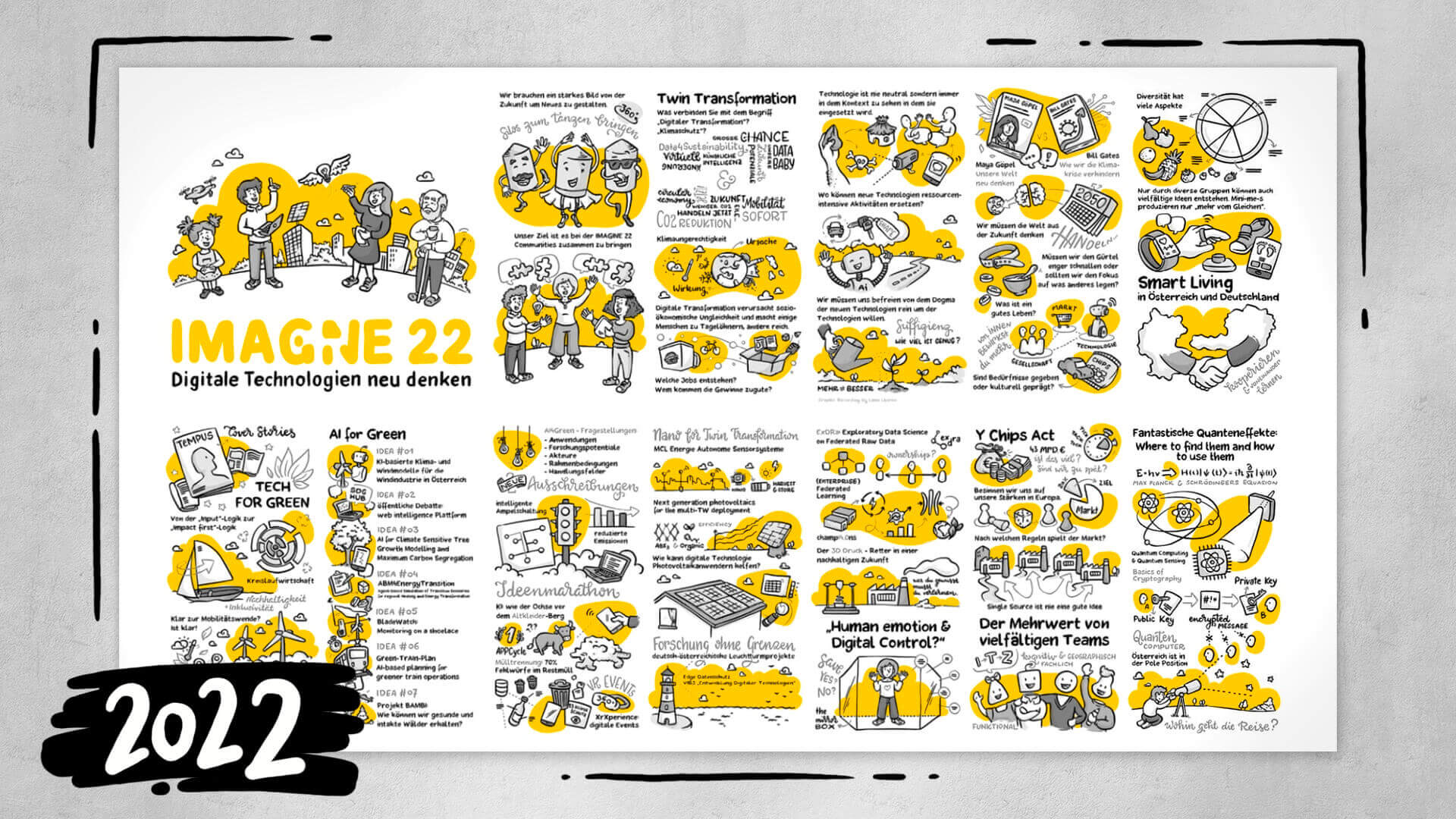
recapsy
The perfect home for my digital works - before, during, and after the event - is the platform recapsy.com. Here I can enter the key details of the event, my contact information, and that of the organizer before the event. On-site, participants can then access, share, and comment on the drawn images live via QR code. And the best part: after the event, a seminar report is automatically available - both as a website and as a downloadable .pdf document. A true game-changer.
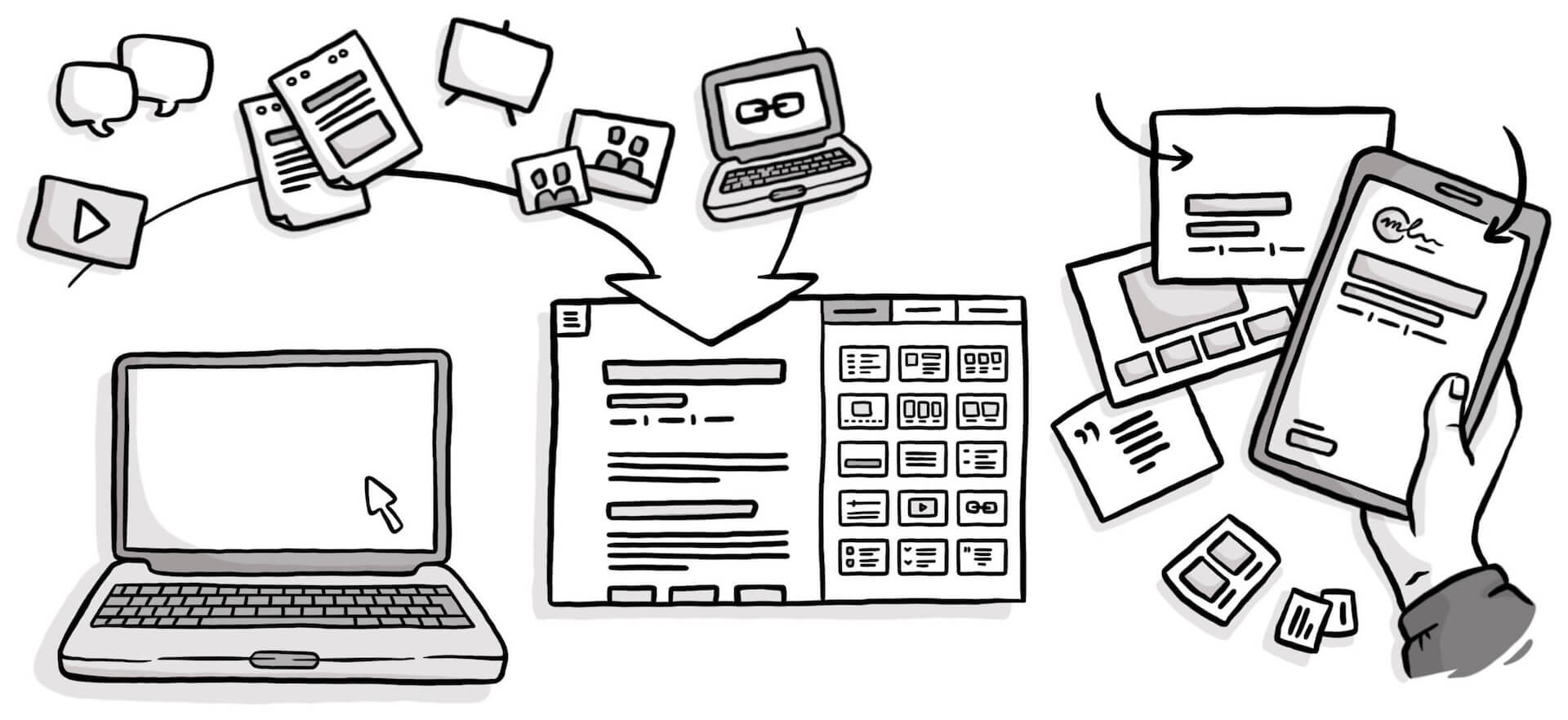
Overall Concepts
By now, I see graphic recording as so much more than just the colorful image created live at the event. The goal is to bring the topics discussed, presented, or worked on during the event into a visual form that enables understanding, remembering, discussing, and sharing the content. And that can be much more than just the graphic recording live on-site. In my toolbox, there are now many more tools.
Preparation for the Event
- Templates for group work on the flip chart, bulletin board, or with digital media
- Support in creating presentations and handouts
- Visual tools for interactive formats
During the Event
- Analog, digital, or remote graphic recording
- Interactive formats that involve the participants
- Postcards produced live on-site - as a gift for the participants
After the Event
- Posters and one-pagers to capture all content at a glance
- Booklets summarizing the event
- Video summary based on the graphic recording
Outlook
I believe that the journey is far from over. Everything is always in flux. There will always be new technologies, new demands from organizers, and new wishes and needs from participants. And for these, new concepts and solutions are required. I am already looking forward to developing them with my clients.
